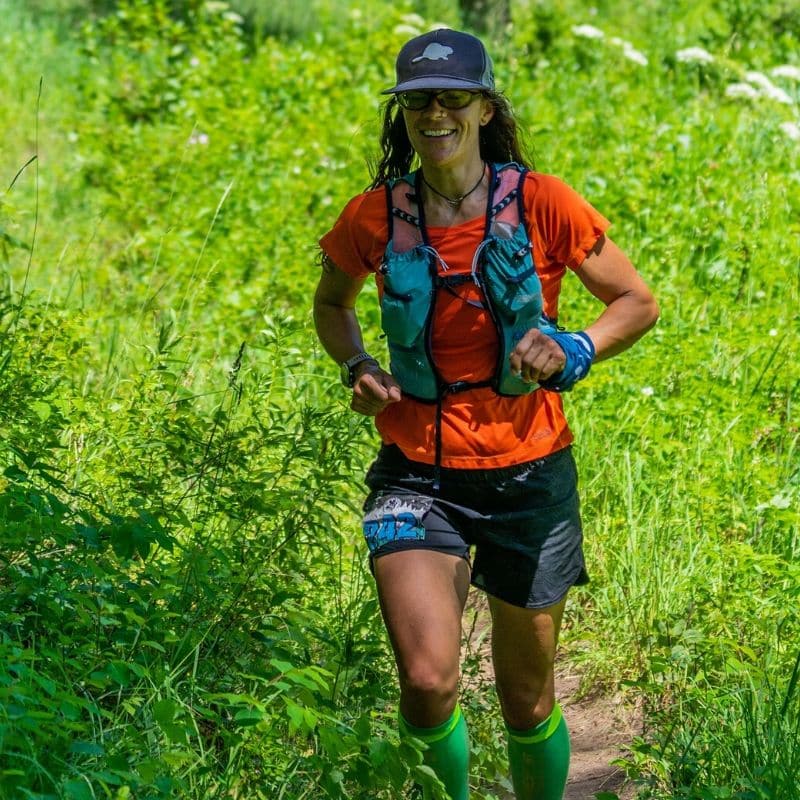
How to Choose Your First Ultramarathon Event
By Darcie Murphy,
CTS Ultrarunning Senior Coach
So, you’ve been running longer miles and hours for a while, and you think you want to toss your hat in the ring and test yourself in a race. Congratulations! The decision to compete is a big step for many athletes. It’s one thing to keep ticking off the miles, exploring your local trail network and climbing the Strava leaderboard, but it’s a big deal to commit to being ‘race ready’ on a specific day. And it can be intimidating. The course might be unfamiliar, you won’t have control over the weather, and aid stations can be overwhelming. Have I scared you off yet? I hope not. Racing is fun! The question is, which race and which distance is the best for a first timer? There’s no perfect answer for all burgeoning ultrarunners, so let’s consider a few main factors.
Training Volume and Longest Run
Your volume of training matters much more than any single long run, and there’s nothing magical about the length of your longest training run. However, the long run can give you a rough sense of what distance you may want to start with. This is because your longest runs can be great confidence builders. For the sake of argument, here’s how you can use your longest run as a barometer for identifying your first ultramarathon race distance. Ideally, your long run should be at least 25% of your anticipated race time (in hours), and your weekly training volume for several weeks should be at least 50% of that anticipated race time. For example, a ballpark estimate for a 50 miler is about 12 hours, give or take an hour or two. If your longest run has been about three hours and you’ve touched a total of 12 hours in a seven-day period at least a couple of times within the eight weeks prior to race day, then that 50-miler may be a reasonable challenge. Again, those are very rough estimates and consistency in training trumps all, but it’s a starting point. Unless your race is in its inaugural year, you should be able to review past finish times, view the median time, and see if you’re close to being on track.
Self Awareness
Know yourself as a competitor. Do you like a challenge with a lot of unknowns, or are you the type who likes to begin a task feeling confident you’ve prepared for every potential situation? Some athletes are driven by a high level of curiosity about what they can accomplish and have a relatively high tolerance for risk. For these athletes, competition empowers them to explore their potential. Others thrive in situations in which they can predict their pace for each mile, there are frequent aid stations, and they can run with a pacer. Neither approach is superior, and both can be challenging, but spend some time examining your own tolerance for risk and desire for support.
Terrain and Elevation
Think about terrain and elevation as well. If you live in the Tetons and spend time scrambling up granite on a regular basis, with a couple thousand feet of elevation change in a typical one- to two-hour run, you’re probably prepared to handle most ultras that have a moderate to moderately high amount of elevation gain/loss. If you live and train in the windy wilds of the plains, where a parking garage or overpass is your best hill repeats option, first, kudos to you for using the tools you have available. Second, a race with more than about 250 feet elevation change per mile on average may be more aggressive than you want for your first race. That’s not to say you can’t progress to mountainous ultramarathons, but a more conservative approach to your first event may increase the likelihood you’ll be successful and enjoy the experience enough to stick with the sport.
There are other environmental factors to consider, as well. What conditions are you already acclimated to? Adding altitude or heat acclimation challenges to training creates a more advanced program. It’s certainly doable, but for your first ultramarathon you may want to choose an environment similar to your home training grounds. Living in a humid, tropical area will help optimize your heat tolerance and you’ll probably know how to handle roots and mud.
Trail characteristics and navigational cues are part of the environmental factors to consider. Those rooty and muddy conditions are a lot different than running in the desert and orienting yourself from one plateau to the next. Those desert plateaus may all look the same to a runner unfamiliar with such a landscape. Trails also tend to be less obvious on sand-laden surfaces and that additional level of stress may be more than you desire for your first trail race.
Most races tend to be well-marked, but things happen. Animals view trail ribbon as a snack and well-meaning hikers have been known to remove markers to pack out litter. Expect that some low-level orienteering be a necessary part of most trail races. If you opt for a climate and terrain that are similar to where you train, there will be fewer unknown factors you’ll need to figure out. I’m always a fan of keeping as many things as possible as simple as possible because ultrarunning is already complex!
► Free Ultrarunning Training Assessment Quiz
Take our free 2-minute quiz to discover how effective your training is and get recommendations for how you can improve.
Enjoying This Article? Get More Free Running Training Tips
Get our coaches' best training advice, delivered straight to your inbox weekly.
Personal Connection
I’ve saved the most important factor for last. Choose a race that has personal meaning to you rather than one that’s popular, impressive to your running and non-running friends, or just convenient. All ultramarathons are hard. The training is difficult and time consuming. Your personal connection to your goal is essential for keeping you going when you’re in the depths of your training blocks or struggling through a rough patch on race day. Preparation and a personal connection are the two biggest factors to staying on course and reaching the finish line on race day.
Know yourself as an athlete and runner, understand basic navigation skills, choose climate and terrain similar to where you train most often, and do the math for which distance you’re reasonably prepared for. Find a race that has personal meaning for you. Setting yourself up for success physically and mentally creates a more positive experience (and likely a better outcome) so you will walk away saying, “Racing is fun!”


Comments 3
It seems there might be a problem with the math? It says 50% of weekly time for a 50 mile race which would be 6 hours or so, but then it says 12 hours a week? Clarification?
I read it that way too but it did say “touch 12 hrs” a couple weeks out of 8 training weeks.
This is a fun article and definitely has a lot of great information to get an athlete out to their first ultra. I think it’s missing the most vital point, the one that most ultra running friends of mine and athletes I train use to decide their race: Travel. When you choose a race near the area in which you live you cut out the added stress of travel and the pressure to perform at the level of your investment. It also relieves anxiety for how you will return home once the event is over. This is not to say that we should limit options to those that are in backyard. I for one certainly love a great destination race! Most first time ultra runners cut their teeth on a local event before making it part of their yearly vacation.